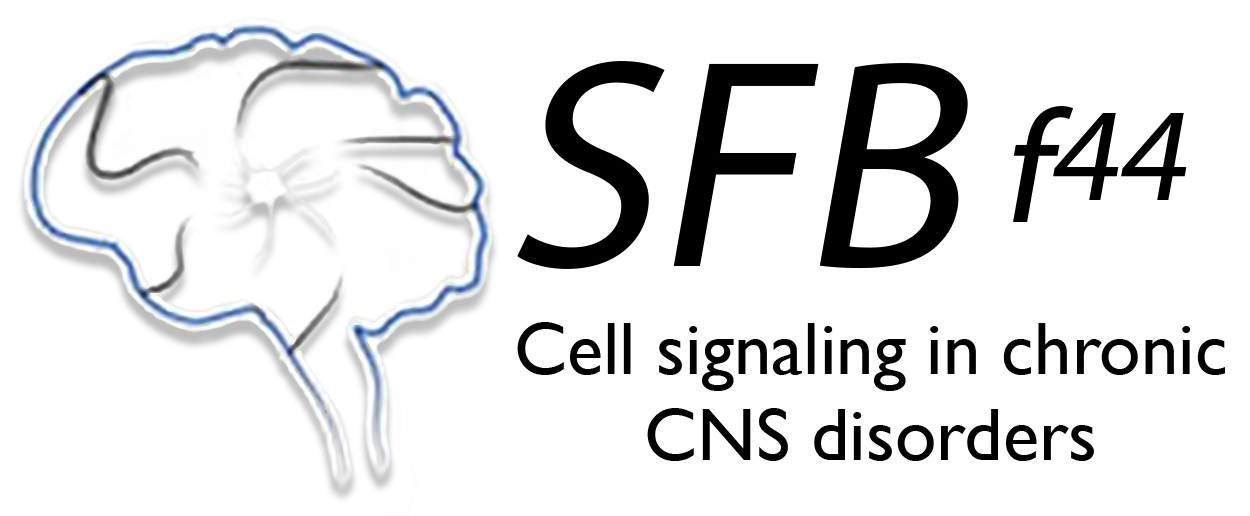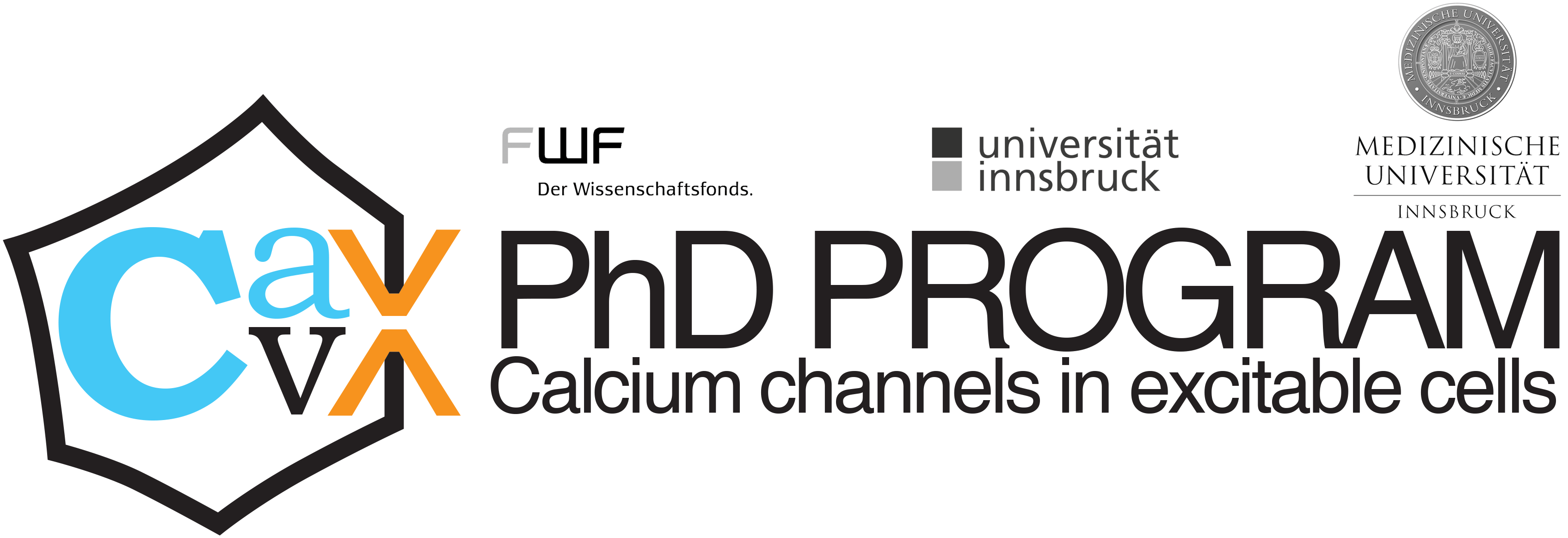// STRIESSNIG GROUP
Keywords: Cav1.3 L-type calcium channels, autism spectrum disorder, de novo mutations, whole-cell patch-clamp
// AIM
Our main interest is the pathophysiology of L-type voltage-gated calcium channels (LTCCs) (and in particular Cav1.3 channels) in the central nervous system. We work on the characterization of de novo variants of the LTCC-encoding genes associated with neurodevelopmental disorders (autism spectrum disorder with or without comorbidities), already found in some affected children. Studying these mutations and assessing their pharmacological properties may be particularly relevant for the treatment of the affected children.
// APPROACH
We use heterologous expression system and electrophysiological techniques in order to characterize these mutations on the functional level. Moreover, in our lab we generated an autism mouse model by introducing one of the pathogenic mutations in Cav1.3 pore-forming subunit (A749G) in mice using CRISPR/Cas9 technique. We already characterized this mouse model on the functional (whole-cell patch-clamp, mouse chromaffin cells Alexandra Pinggera, Nadja Hofer), behavioral (Nadine Ortner in collaboration with Singewald group) and morphological level (neuroanatomical analysis Nadine Ortner). Our next task is to understand how autism-associated mutation affects synaptic connectivity (hippocampal cultures, high-resolution microscopy Yuliia Nikonishyna), neuronal excitability (in slice electrophysiology Ludovica Filippini, Nadine Ortner) and differential neural circuits (immediate early gene IEG mapping Yuliia Nikonishyna). Furthermore, we aim to test a drug sensitivity of mutant Cav1.3 channels in order to search for a potential treatment (Ferenc Török).
// CURRENT RESEARCH
Voltage-gated L-type Cav1.3 calcium channels (CACNA1D) are expressed in brain, heart, sensory (auditory and vestibular hair cells) and endocrine (pancreatic islets, adrenal medulla) systems. These channels can be distinguished by the low activation threshold which allows them to contribute to pace-making activity in neurons and sinoatrial node (SAN), spike-frequency adaptation and mediate hormone secretion. Large-scale sequencing studies identified a number of de novo missense mutations in Cav1.3 activation gate in patients with neurodevelopmental disease spectrum. By functional characterization of these mutations we and others revealed a gain-of-function phenotype for these variants compatible with increased Ca2+ influx which can underlay a disease-causing mechanism (Pinggera A. 2015; Pinggera A. 2017; Tan GC 2017; Hofer NT 2020). Therefore, if a typical gain-of-function change can be demonstrated for novel rare variants in patients with neurodevelopmental disorders, then pathogenicity of these mutations can be confirmed.
Our group stays in contact with clinicians who treat patients with neurodevelopmental disorders carrying mutations in voltage-gated calcium channels (Cav1.3, Cav2.1 channels) and we use whole-cell patch-clamp technique to characterize these variants.
Currently, we are also testing the effect of pathogenic mutations in Cav1.3 pore-forming subunit on the dendritic spine morphology of hippocampal neurons using high-resolution fluorescent microscopy. To evaluate changes in spine morphology, we use overexpression system and we also aim to study this aspect in autism mouse model developed in our lab.
We also perform electrophysiological experiments in mice brain slices to look at alterations in neural circuitry induced by these de novo variants of the channel.
// LAB MEMBERS
- Group leader: Jörg Striessnig
// ALUMNI
-
- Ferenc Török
- Nadine Ortner
- Ludovica Filippini
- Yuliia Nikonishyna
- Alexandra Pinggera
- Nadja Hofer
- Anita Siller
- Andreas Lieb
- Gabriela Bock
- Anja Scharinger
// ADDRESS
Pharmacology and Toxicology,
Institute of Pharmacy
University of Innsbruck
Center for Chemistry and Biomedicine
Innrain 80-82/III
A-6020 Innsbruck, Austria
// SELECTED PUBLICATIONS
Keywords: L-type calcium channels, Cav1.3 gain-of-function mutations, CACNA1D de novo mutations, isradipine
Baig SM, Koschak A, Lieb A, et al. Loss of Ca(v)1.3 (CACNA1D) function in a human channelopathy with bradycardia and congenital deafness. Nat Neurosci. 2011;14(1):77-84.https://pubmed.ncbi.nlm.nih.gov/21131953/
Platzer J, Engel J, Schrott-Fischer A, et al. Congenital deafness and sinoatrial node dysfunction in mice lacking class D L-type Ca2+ channels. Cell. 2000;102(1):89-97.https://pubmed.ncbi.nlm.nih.gov/10929716/
Ortner NJ, Bock G, Dougalis A, et al. Lower Affinity of Isradipine for L-Type Ca2+Channels during Substantia Nigra Dopamine Neuron-Like Activity: Implications for Neuroprotection in Parkinson’s Disease. J Neurosci. 2017;37(28):6761-6777.https://pubmed.ncbi.nlm.nih.gov/28592699/
Pinggera A, Negro G, Tuluc P, Brown MJ, Lieb A, Striessnig J. Gating defects of disease-causing de novo mutations in Cav3 Ca2+channels. Channels (Austin). 2018;12(1):388-402.https://pubmed.ncbi.nlm.nih.gov/30465465/
Pinggera A, Lieb A, Benedetti B, et al. CACNA1D De Novo Mutations in Autism Spectrum Disorders Activate Cav1.3 L-Type Calcium Channels. Biol Psychiatry. 2015;77:816–822. https://pubmed.ncbi.nlm.nih.gov/25620733/
Pinggera A, Mackenroth L, Rump A, et al. New gain-of-function mutation shows CACNA1D as recurrently mutated gene in autism spectrum disorders and epilepsy. Hum Mol Genet. 2017;26:2923–2932.https://pubmed.ncbi.nlm.nih.gov/28472301/
Tan GC, Negro G, Pinggera A, et al. Aldosterone-Producing Adenomas: histopathology-Genotype Correlation and Identification of a Novel CACNA1D Mutation. Hypertension. 2017;70:129–136.https://pubmed.ncbi.nlm.nih.gov/28584016/
Pinggera A, Negro G, Tuluc P, Brown MJ, Lieb A, Striessnig J. Gating Defects of Disease-Causing De Novo Mutations in Cav1.3 Ca2+ Channels. Channels (Austin). 2018;12(1):388-402.https://pubmed.ncbi.nlm.nih.gov/30465465/
Hofer NT, Tuluc P, Ortner NJ, Nikonishyna YV, Fernándes-Quintero ML, Liedl KR, Flucher BE, Cox H, Striessnig J. Biophysical Classification of a CACNA1D De Novo Mutation as a High-Risk Mutation for a Severe Neurodevelopmental Disorder. Mol Autism. 2020;11(1):4.https://pubmed.ncbi.nlm.nih.gov/31921405/
Pinggera A, Striessnig J. Cav1.3 (CACNA1D) L-type Ca2+ Channel Dysfunction in CNS Disorders. J Physiol. 2016;594(20):5839-5849. https://pubmed.ncbi.nlm.nih.gov/26842699/
Ortner NJ, Striessnig J. L-type calcium channels as drug targets in CNS disorders. Channels (Austin). 2016;10(1):7-13. https://pubmed.ncbi.nlm.nih.gov/26039257/
Striessnig J, Ortner NJ, Pinggera A. Pharmacology of L-type Calcium Channels: Novel Drugs for Old Targets? Curr Mol Pharmacol. 2015;8(2):110-122. https://pubmed.ncbi.nlm.nih.gov/25966690/
Full publication list (Pubmed search)
// FUNDING
 |
